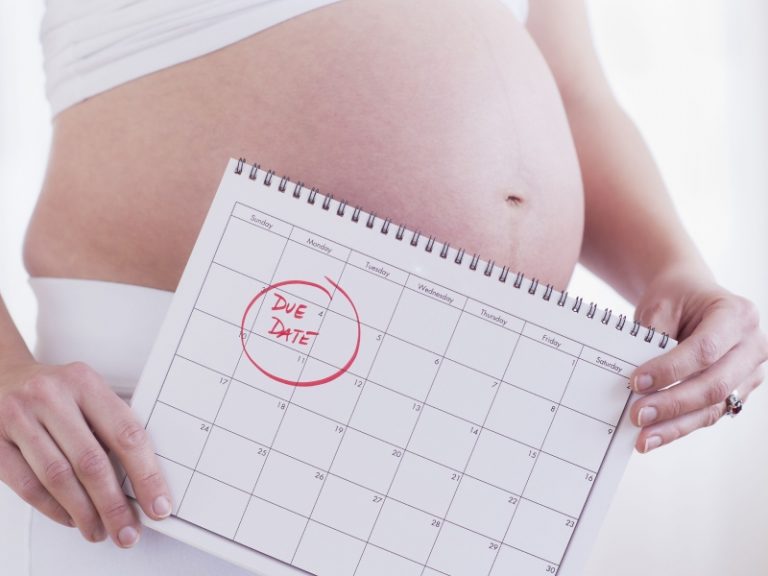How to Calculate Your Due Date After IVF: A Complete Guide for Expecting Parents
Congratulations! If you’re reading this, you’ve likely gone through the incredible journey of in vitro fertilization (IVF) and are now expecting a little one. One of the first questions that pops up after a successful IVF cycle is, “When will my baby arrive?” Calculating your due date after IVF isn’t quite the same as it is with a natural pregnancy, but don’t worry—it’s simpler than you might think, and I’m here to walk you through it step by step. This guide is packed with everything you need to know, from the basics of IVF timelines to insider tips and the latest insights that’ll make this exciting time a little less mysterious.
Why IVF Due Dates Are Different (and More Accurate!)
With a natural pregnancy, doctors usually estimate your due date based on the first day of your last menstrual period (LMP). It’s a bit of a guessing game because not everyone ovulates on day 14 of their cycle, and sperm can hang out for days waiting to meet an egg. IVF, though? It’s a whole different story. Since the process is so carefully controlled, you know exactly when fertilization happens and when the embryo is transferred. That precision makes IVF due dates a lot more reliable—pretty cool, right?
Think of it like baking a cake. In a natural pregnancy, you’re not 100% sure when you popped it in the oven. With IVF, you’ve got the timer set to the second. A typical pregnancy lasts about 40 weeks (280 days) from the LMP, but with IVF, we tweak that timeline based on your specific transfer day and embryo age. Let’s dive into how that works.
The Basics: How IVF Due Dates Are Calculated
Your IVF due date hinges on two key pieces of info: the date of your embryo transfer and the age of the embryo when it was transferred. Most clinics do either a Day 3 transfer (when the embryo is 3 days old) or a Day 5 transfer (when it’s reached the blastocyst stage, about 5 days old). Here’s how to figure it out:
Step 1: Know Your Transfer Date
This is the day your doctor placed the embryo into your uterus. Check your IVF paperwork—it’s usually listed there, or you can ask your clinic. Let’s say your transfer was on April 10, 2025.
Step 2: Check the Embryo Age
- Day 3 Transfer: The embryo was 3 days old when transferred.
- Day 5 Transfer: The embryo was 5 days old (a blastocyst).
Step 3: Do the Math
A full-term pregnancy is about 266 days from fertilization, plus the embryo’s age at transfer. Here’s the formula:
- Day 3 Transfer: Add 263 days to the transfer date (266 days + 3 days already grown = 263 days left).
- Day 5 Transfer: Add 261 days to the transfer date (266 days + 5 days already grown = 261 days left).
Example Time!
- Day 3 Transfer on April 10, 2025: Add 263 days. That lands you on December 29, 2025.
- Day 5 Transfer on April 10, 2025: Add 261 days. That’s December 27, 2025.
Easy, right? You can use a calendar or an online IVF due date calculator to double-check. Your doctor will confirm this with an early ultrasound, but this gives you a solid starting point.
Fresh vs. Frozen Embryo Transfers: Does It Change Anything?
You might be wondering if using a fresh embryo versus a frozen one affects your due date. Good news—it doesn’t! Whether your embryo was transferred right after fertilization (fresh) or thawed from storage (frozen embryo transfer, or FET), the calculation stays the same. The embryo’s “age” is locked in at the time it was frozen—usually Day 3 or Day 5—so you still use that as your baseline.
For example, if you had a Day 5 FET on April 10, 2025, your due date is still December 27, 2025. The freezing process is like hitting pause on a movie—it doesn’t add or subtract time from the pregnancy clock.
Interactive Quiz: What’s Your IVF Due Date?
Let’s make this fun! Grab a pen or just think it through—here’s a quick quiz to estimate your due date:
- What was the date of your embryo transfer? (Example: April 10, 2025)
- Was it a Day 3 or Day 5 transfer?
- Day 3: Add 263 days.
- Day 5: Add 261 days.
- Count forward on a calendar. Where do you land?
Write down your answer and share it with your partner—or keep it as a little secret until your doctor confirms it. How close do you think you’ll be to the real date?
What If You Used Donor Eggs or Sperm?
If your IVF cycle involved donor eggs or sperm, the due date calculation doesn’t change. The key factors are still the transfer date and embryo age, not whose genetic material was used. However, donor egg pregnancies sometimes come with a twist: they’re often monitored a bit more closely because the mom’s body didn’t produce the egg. Early ultrasounds (around 6-8 weeks) will fine-tune your due date, but the basic math stays the same.
The Ultrasound Factor: Fine-Tuning Your Due Date
Here’s where things get really exciting. Around 6-8 weeks after your transfer, you’ll have your first ultrasound. This isn’t just about seeing that tiny heartbeat (though that’s amazing); it’s also a chance to measure your baby’s size. Doctors use something called the “crown-to-rump length” to check how your little one is growing. If the measurements match your calculated due date, great! If not, they might adjust it by a few days.
For instance, if your Day 5 transfer says December 27, but the ultrasound shows your baby is a bit ahead or behind, your due date could shift to, say, December 25 or December 29. This tweak is super common and usually nothing to worry about—it just means your baby’s growing at their own pace.

Common Questions Expecting Parents Ask
IVF pregnancies spark a lot of curiosity. Here are some answers to questions I’ve heard from friends and folks online:
“Is My Due Date More Accurate with IVF?”
Yes! Because you know the exact fertilization and transfer dates, there’s less guesswork than with natural conception. Studies, like one from the American College of Obstetricians and Gynecologists (ACOG), back this up—IVF due dates are spot-on about 95% of the time when confirmed by ultrasound.
“What If I’m Carrying Twins?”
Twins or multiples often arrive earlier—around 36-37 weeks instead of 40. If you transferred two embryos and both implanted, your doctor will likely estimate a due date about 3-4 weeks earlier than a singleton. So, for a Day 5 transfer on April 10, 2025, twins might arrive around late November instead of late December.
“Can Stress or Diet Affect My Due Date?”
Nope. Your due date is set by biology—stress or what you eat might affect your pregnancy experience, but not when baby arrives. That said, a healthy lifestyle can make those 9 months smoother!
3 Things You Haven’t Heard About IVF Due Dates
Most articles stick to the basics, but there’s more to the story. Here are three insights you won’t find everywhere:
1. The Embryo Quality Connection
Not all embryos grow at the same rate. A 2023 study in Fertility and Sterility found that higher-quality blastocysts (graded AA or AB) tend to implant and develop faster, sometimes shaving a day or two off the expected timeline. Lower-quality embryos might take a smidge longer. Your embryologist’s report could hint at this, but it’s a tiny factor—don’t sweat it too much.
2. Frozen Embryos Might Be Sleepy Starters
Some research suggests that frozen embryos take a day or two longer to “wake up” after thawing and start growing compared to fresh ones. A 2024 paper from Human Reproduction noted this slight delay in implantation, but it rarely shifts the due date by more than a couple of days. Your clinic’s thawing technique plays a role here.
3. Your Uterine Lining Matters
The thickness of your uterine lining on transfer day can influence how quickly the embryo implants. A lining of 8-12 mm is ideal, per a 2022 study in Reproductive BioMedicine Online. If it’s thinner, implantation might take an extra day or two, nudging your due date slightly. Doctors often optimize this with meds, so it’s usually a non-issue.
These nuggets don’t change the basic calculation, but they add depth to why your due date might wiggle a bit when confirmed.
Tips to Track Your Pregnancy Like a Pro
Now that you’ve got your due date, how do you keep tabs on this wild ride? Here are some practical ideas:
✔️ Mark Your Calendar: Circle your due date and count backward to plan key milestones—like your first ultrasound (6-8 weeks) or the end of your first trimester (12 weeks).
✔️ Download an App: Apps like What to Expect or Ovia Pregnancy can plug in your IVF transfer date and give you week-by-week updates.
✔️ Keep a Journal: Jot down how you’re feeling each week. It’s a sweet keepsake and helps you spot patterns (like when that morning sickness kicks in).
❌ Don’t Obsess Over the Exact Day: Only about 4% of babies arrive on their due date, IVF or not. Think of it as a ballpark!

Poll: When Do You Think Your Baby Will Actually Arrive?
Let’s get interactive! Babies love to keep us guessing. Based on your due date, when do you think your little one will really show up?
- A) Right on time
- B) A week early
- C) A week late
- D) Total wild card—could be anytime!
Drop your guess in your mind (or share it with a friend), and see how it plays out. I’d bet on B—early birds are common with IVF!
How Doctors Confirm Your Due Date (Beyond the Math)
Your clinic hands you off to an OB-GYN around 8-10 weeks, and that’s when the pros double-check everything. Here’s what they do:
Early Ultrasound (6-8 Weeks)
This is the gold standard. The tech measures your baby from head to bottom (crown-to-rump) and compares it to growth charts. If it aligns with your transfer-based due date, you’re golden. If not, they adjust.
Growth Scans (Later On)
Around 20 weeks, a detailed anatomy scan tracks baby’s size. If growth is off, it might hint at an earlier or later arrival, but it’s more about health than due date at this point.
Your Input
Tell your doctor your transfer date and embryo type—they’ll factor it in. Mistakes happen if they assume a natural pregnancy timeline, so speak up!
What Science Says About IVF Babies and Timing
IVF babies are special, and research backs up some cool facts:
- A 2021 study in The Lancet found IVF pregnancies have a slightly higher chance of preterm birth (before 37 weeks)—about 10% versus 7% for natural pregnancies. This might bump your delivery a tad earlier.
- The Journal of Assisted Reproduction and Genetics (2023) showed Day 5 transfers lead to more consistent due dates than Day 3, thanks to better embryo selection.
But here’s the kicker: even with all this science, your baby picks the final date. Nature loves a plot twist!

Real-Life Example: Sarah’s IVF Journey
Meet Sarah, a 34-year-old mom-to-be I chatted with recently (name changed for privacy). She had a Day 5 FET on March 15, 2025. Using our formula, she added 261 days and got December 1, 2025, as her due date. At her 7-week ultrasound, baby measured right on track, confirming December 1. But Sarah’s twins (yep, two embryos stuck!) meant her OB predicted a late-November delivery instead. She’s now prepping for a cozy Thanksgiving arrival—talk about a holiday surprise!
Sarah’s story shows how the basic calculation sets the stage, but twins, ultrasounds, and baby’s whims can tweak the script.
IVF Due Date Myths to Bust
There’s a lot of chatter out there, so let’s clear up some confusion:
❌ Myth: IVF babies always come early because of the process.
✔️ Truth: Most go full term unless there’s a medical reason (like multiples or preterm labor risks).
❌ Myth: Your due date changes if you used a donor embryo.
✔️ Truth: Nope—it’s still about transfer day and embryo age, not the donor’s timeline.
❌ Myth: Stress pushes your due date back.
✔️ Truth: Stress might make you feel overdue, but it doesn’t shift biology.
Planning Around Your Due Date: Practical Advice
Got your date? Awesome—now let’s get ready:
1. Build a Timeline
- 6-8 Weeks: First ultrasound.
- 12 Weeks: Share the news (if you want!).
- 20 Weeks: Anatomy scan and nursery planning.
- 36 Weeks: Pack your hospital bag.
2. Prep for Flexibility
Stock up on essentials (diapers, wipes, onesies) a month early—babies don’t read calendars.
3. Lean on Your Team
Tell your doctor about your IVF details, and ask questions if the due date shifts. They’re your co-pilot!
Checklist: Are You Ready for Your Due Date?
Let’s see how you’re doing! Check off what you’ve got covered:
☐ Calculated my due date with transfer date and embryo age.
☐ Booked my first ultrasound (6-8 weeks post-transfer).
☐ Started tracking weeks in an app or journal.
☐ Talked to my doctor about my IVF timeline.
☐ Accepted that baby might surprise me anyway!
How many did you tick? If it’s 3 or more, you’re rocking this!
The Emotional Side of Waiting
Calculating your due date is just the start—then comes the waiting. After IVF, that countdown can feel extra loaded. You’ve worked so hard to get here, and every week might bring a mix of joy, nerves, and “Is it time yet?” That’s normal. One mom told me she kept her due date circled in red, counting down like it was New Year’s Eve. Find little rituals—maybe a weekly belly pic or a chat with your bump—to make it fun.
Bonus: A Simple DIY Due Date Chart
Want a visual? Here’s a quick chart for a Day 5 transfer on April 10, 2025 (261 days to December 27):
| Milestone | Date (Approx.) | Weeks Pregnant |
|---|---|---|
| Transfer Day | April 10 | 0 |
| Positive Test | April 24 | 2 |
| First Ultrasound | May 8 | 4 |
| End of 1st Trimester | July 3 | 12 |
| Anatomy Scan | August 28 | 20 |
| Due Date | December 27 | 38 |
Tweak the dates for your transfer—just subtract or add days from April 10. Pin it somewhere to watch your journey unfold!


